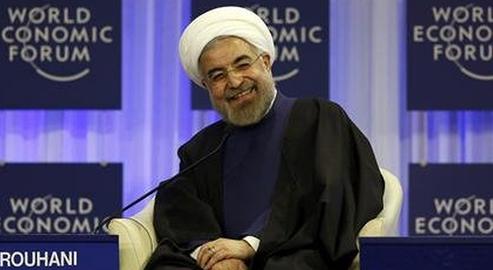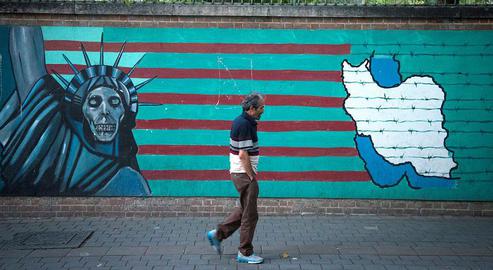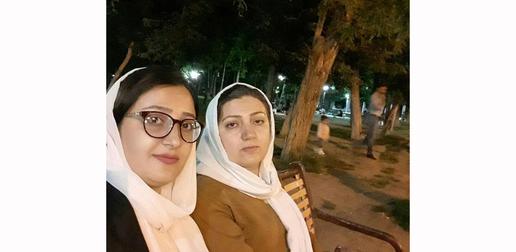International Monetary Fund (IMF) research reveals that the Iranian economy is rapidly shrinking, and is among the poorest performing economies in the world.
The IMF’S latest estimate for 2019, published on October 18, determined that Iran is struggling with one of the deepest economic recessions in its history and that Iran’s real gross domestic product (GDP) growth for this year was -9.5 percent, an unprecedented level over the last 31 years. Over the last year, one-tenth of the Iranian economy has simply disappeared.
A year earlier, in 2018, the GDP growth was -5 percent. Taking the GDP for 2017 GDP as the basis for evaluating the Iranian economy, meaning 100 percent, one year later the economy was at 95 percent of that starting point and the year after that it was 85 percent. So within two years, Iran’s economy is now 15 percent smaller than it was in 2017.
But going back even further — say to the start of Hassan Rouhani’s presidency in 2013 — it can be determined that over these six years the Iranian economy has failed to move forward at all while, according to the findings of the Statistical Center of Iran, the population of Iran grew from 77 million in 2013 to 83 million in 2019 — an eight percent increase in six years. This means that, in the last six years, each Iranian citizen’s share of the gross domestic product has fallen by seven percent.
Over these six years, the total world economy grew by an average of 19 percent while, during the same period, Iran’s economy grew by less than 1.8 percent. So while most countries in the world are forging ahead with economic development — uneven as it might be — the Iranian economy continues to shrink, while Iran’s population continues to grow. The IMF predicts that the Iranian economy will not grow by more than one percent by 2020 unless the country can somehow emerge from the current crisis and if economic sanctions are lifted. However, taking into account the increase in the population, even this potential one-percent growth will not realistically improve the situation.
A Comparison with Other Economies
Among the economies of the countries around the world, Iran held the third place when it came to declining GDP in 2019 — after Venezuela and Libya. Apart from the countries for which there is no available information, only 14 countries witnessed a negative GDP growth in 2019 and, among them, only five countries had a negative growth of more than five percent.
The average GDP growth rate for all countries in the world in 2019 was three percent. Seen from this perspective, Iran’s economy shrank by 12.5 percent compared with the world average.
Comparing Iran’s economy with the economies of its neighboring countries does not paint a more promising picture. The graph below illustrates the growth of the GDP in these countries:
This comparison leaves no doubt that the unusual situation experienced in the Iranian economy is not geographical but due to external factors — specifically the American sanctions. In other words, the Islamic Republic’s political failure in its international relations has led to the current dismal situation.
The Main Factor behind Iran's Shrinking Economy
After the imposition of sanctions and with the United States’ determination to eliminate Iranian oil exports, it was not difficult to predict the steep fall in Iran’s GDP.
The importance of petroleum in Iran’s economy is clear, so the halt in oil exports and the drop in the production of petroleum play a huge role in the country’s recession and the fall of GDP.
According to statistics published by the Iranian Central Bank, the share of oil in the Iranian economy was between 22 and 23 percent in 2017 and 2018. During the previous round of sanctions in the early 2010s, the share of oil in the economy fell to approximately 14 percent but, in general, it has remained somewhere between 20 to 25 percent of the Iranian economy. Therefore, even in the best of situations, a 40 percent drop in the production of oil would cause a nine percent drop in Iran’s economy.
The Organization of Petroleum Exporting Countries’ (OPEC) monthly report for October 2019 shows that the volume of Iran’s oil production now stands at 2.159 million barrels per day — the lowest it has been over the last 40 years, even if compared to the production during the 1980-1988 war between Iran and Iraq. After the nuclear treaty took effect, Iran’s oil production surpassed 3.8 million barrels a day and it continued to do so until President Trump took the US out of the nuclear agreement in 2018. Still, nobody could imagine that over a period of one year and four months, the production would fall by 40 percent and oil exports would fall to below 500,000 barrels a day.
Iran does not publish official statistics about its petroleum exports but, according to OPEC, Iran’s domestic consumption of oil in 2018 was 1.854 barrels per day. If it can be assumed that the domestic consumption has stayed the same, it can be concluded that in the last month Iran has been exporting around 300,000 barrels a day — a pathetic volume even compared to oil exports during the Iran-Iraq war.
Can the Trend be Reversed?
The simple answer is that yes, it can. On paper, if Iran’s oil production returns to the level of two years ago, Iran’s GDP would grow by nine percent, as it was before. But even then, two years of opportunities for development would have been lost anyway, and Iran’s economic, political and social capital would be poorer for it.
However, this is just on paper. In the real world the situation is more complicated. First of all, there is no sign that international tensions are subsiding or that the sanctions will be lifted anytime soon. Secondly, even if the sanctions are lifted, the economy will not immediately snap back to the way it was before. After the nuclear agreement went into effect, it took about a year for oil production to return to the ceiling of 3.8 million barrels per day. It is reasonable to assume that this time it would take even longer because, after their recent experience, Iran’s oil customers would be doubly cautious about returning to the market. As the saying goes, once bitten, twice shy.
Related Coverage:
Iran Joins Eurasian Economic Union to Combat US Sanctions, October 14, 2019
Employment Figures for Summer 2019: Has it Really Improved?, October 11, 2019
Is There any Hope of Reining in Iran's Runaway Inflation?, May 24, 2019
This Year 57 Million Iranians Will Be Living Below the Poverty Line, May 15, 2019
A Bleak Future for Iran's Job Market, May 3, 2019
Decline in Investment Across Iran After US Exit from the Nuclear Deal, April 27, 2019
Can Iran Survive Record Inflation?, February 25, 2019
Iran’s Unemployment Crisis: Only 11 Million Full-time Jobs, January 23, 2019
visit the accountability section
In this section of Iran Wire, you can contact the officials and launch your campaign for various problems


























comments